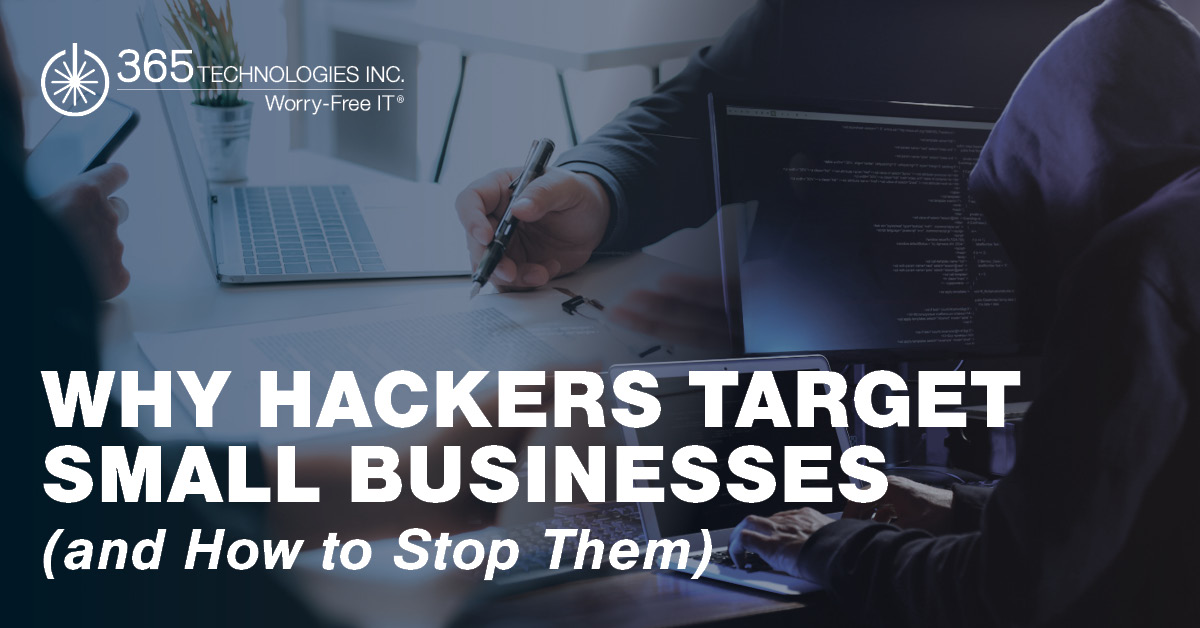365 Technologies: Blog
How is 2FA Better Than One-Factor Authentication?
How is 2FA Better Than One-Factor Authentication?
Corporate data breaches are on the increase, and the damage lies in how easy it is for hackers to steal usernames and password combinations. Statistics show that approximately 21% of the Canadian business population was affected by cybersecurity attacks in 2019. 9% of the affected businesses identified an attempt to steal money or demand a ransom payment. 6% of the companies said the motive of the hacking attempt was to steal personal or financial information.
Businesses, whether affected by cyberattacks or not, should strive to protect their data from theft. This is where Two-Factor Authentication (2FA) comes in to provide an extra layer of security to online accounts. Beyond the username and password, a user must provide an additional log-in credential to access their account.
Why Use 2FA?
Cybersecurity best practices dictate that users should utilize Multi-Factor Authentication (MFA) over Single-Factor Authentication (SFA) whenever possible. 2FA is a form of MFA as it entails using more than one security factor in securing an online account. Single or One-Factor Authentication is when a user submits a username and a password to access an online account. Sadly, passwords are highly prone to brute-force attacks and mass data breaches.
The widespread data breaches have put millions of password and username combinations up for sale on the dark web. Consequently, many passwords have become less secure, especially because many people reuse them across multiple accounts.
With 2FA, you use two independent factors, and each is well secured at all stages. One of the factors is something you know, like your password. The other factor is something that you have, like a phone or card.
An ATM or debit card and a PIN combination is an excellent example of 2FA. Unfortunately, consumers make the mistake of writing the PIN on the back of the card. Others store the PIN with the card. This defeats the purpose of the secret number, making consumers the weak link that hackers target in their attacks. Besides, hackers can clone the plastic debit card and capture the PIN through a skimming attack, making the 2FA ineffective.
2FA describes an approach to security, not a method. Three primary approaches to 2FA are:
- An extra login credential, known to the account holder only. An example is an answer to a security question.
- A device the account holder owns and through which they receive additional login information. This mostly comes in the form of a mobile phone app, security token, or tablet device app.
- Biometrics login information unique to the account owner, for example, fingerprints or retina scans.
You can choose which 2FA method works best in your business situation.
How Does 2FA Enhance Security?
Here’s how adding 2FA to an account looks like:
2FA Through an Additional Login Credential
Additional login credentials can be in the form of a code sent as a text message to a mobile phone number registered to the account. Code numbers tend to the most streamlined approach to 2FA. All a user needs are a cellphone and to be connected to a wireless network.
While text message verification is popular for personal accounts, companies also use the approach. However, the method is not risk-free. Hackers can impersonate users to the phone company, hijack their details and gain access to their accounts. Besides, employees risk locking themselves out of their accounts when on business trips out of Canada.
Authentication Applications
2FA through an authentication app works by generating a code that you must enter on your accounts login page to gain access. Unlike a text message, it’s not necessary to have a wireless network connection. Any internet connection is sufficient to allow you to access your account. In case of internet connection failure, some apps like Google provide a list of backup codes that you can use.
Biometrics 2FA
In this approach to 2FA, you must present something unique to you as a person to access your account. Commonly used methods include retina or fingerprint scans by your device’s camera. The approach is becoming increasingly popular in corporate settings as it provides a high level of security.
How Will 2FA Help Your Business?
If you own a small business, you might think that you’re safe from cyberattacks. This could not be further from the truth. Hackers target all businesses, regardless of their size. Most of their attacks are automated, always in search of vulnerable businesses, the size notwithstanding. Attacks on small businesses tend to be more devastating as the companies usually lack the financial muscle to recover.
This explains why you must take proactive steps to protect your data regardless of the size of your business. You stand to benefit in several ways by implementing 2FA:
Enhanced Data Security
2FA provides additional one-time passwords (OTPs) that are harder for hackers to crack. Physical characteristics like voice recognition and fingerprints are also difficult for hackers to replicate or get hold of.
Increased Productivity
When you take the necessary steps to secure your business data, employees can work remotely without the fear of data breaches. Working from home boosts employee productivity. This means a lower turnover and reduced hiring costs for your business.
Improved Customer Reputation
Your customers will not have a problem interacting with you online if they know their data is safe. They will appreciate that you have measures in place to protect their personal information. In turn, they will reward you with increased loyalty. This means customer retention and more sales for your company.
Reduced Operational Costs
Without proper security measures, you might spend a lot of money informing your clients about malicious activities on their accounts. Your employees will also use a lot of time helping customers reset their account passwords when hacking attempts happen.
When you have 2FA in place, there will be fewer suspicious activities on customer accounts. Consequently, you’ll spend less money and time on customer service help desks. This alone justifies meeting the cost of implementing 2FA.
Final Thoughts
The aftermath of a cyberattack on your business can be devastating and can bring your company down. The cost of implementing 2FA is relatively smaller compared to the damage caused by a cyberattack. As such, you’re better off investing in implementing the process well in advance.
For the best results, always work with cybersecurity experts to ensure you use the right approach to securing your systems. At 365 Technologies, we specialize in helping businesses in Winnipeg, MB, secure their IT systems for worry-free IT operations.
Contact us today to schedule an initial consultation to review your company’s cybersecurity readiness.






